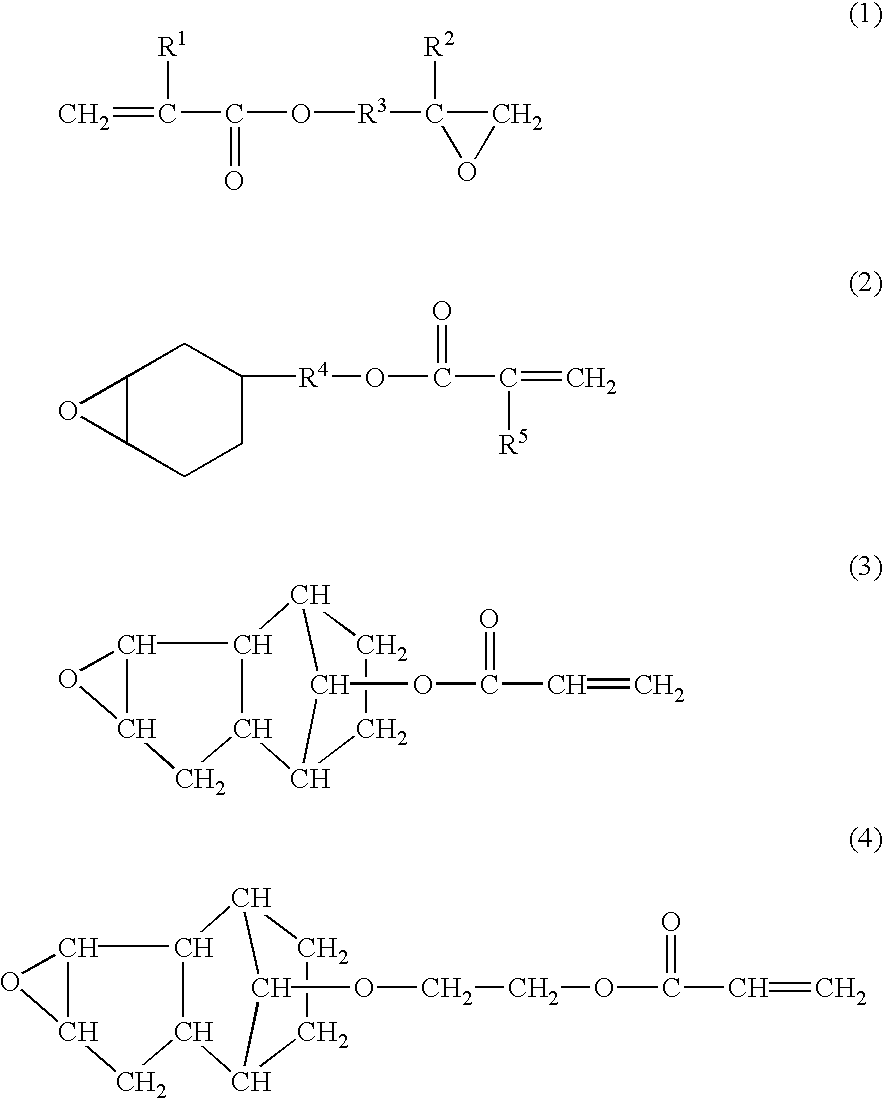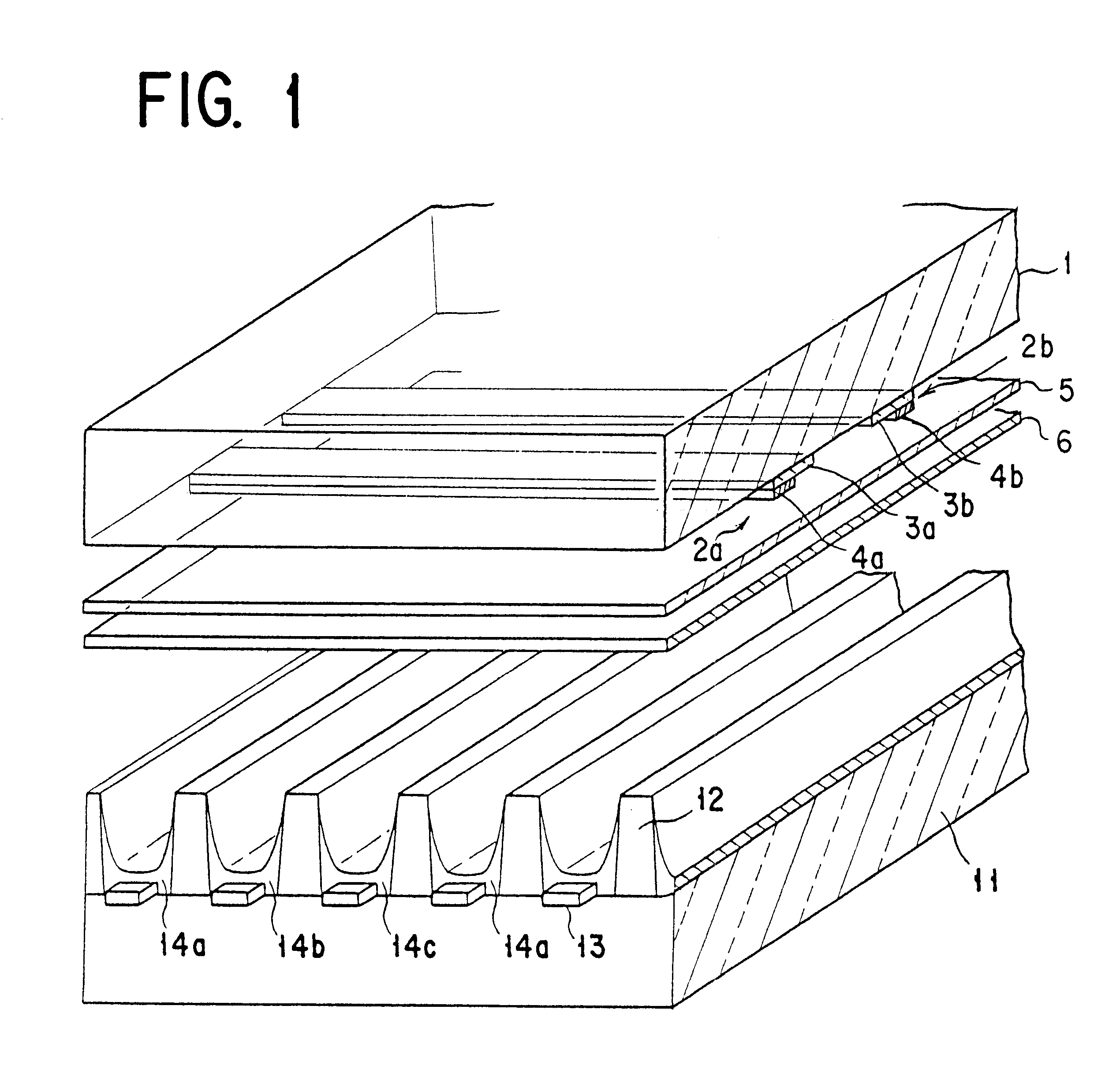Photo-curable electrically conductive composition and plasma display panel having electrodes formed by use of the same
a technology of photocurable electrical conductive composition and plasma display panel, which is applied in the manufacture of electrode systems, cold cathode manufacturing, electric discharge tube/lamp manufacture, etc., can solve the problems of electrodes, clear black electrical conductive film cannot be obtained due to silver color tone, and it is difficult to obtain electrical conductive film having the desired conductivity
- Summary
- Abstract
- Description
- Claims
- Application Information
AI Technical Summary
Problems solved by technology
Method used
Image
Examples
synthesis example 1
Into a flask equipped with a thermometer, a stirrer, a dropping funnel, and a reflux condenser, methyl methacrylate and methacrylic acid were charged in a molar ratio of 0.76:0.24 and dipropylene glycol monomethyl ether as a solvent and azobisisobutyronitrile as a catalyst were added thereto and they were together stirred under an atmosphere of nitrogen gas at 80.degree. C. for 2-6 hours to obtain a resin solution.
The resultant resin solution was cooled and, in the presence of methyl hydrdquinone as a polymerization inhibitor and tetrabutyl phosphonium bromide as a catalyst, subjected to addition reaction of glycidyl methacrylate at a molar ratio of 0.12 mole per one mole of the carboxyl groups of the resin mentioned above under the conditions of 95-105.degree. C. and 16 hours. The reaction product was cooled and then the resultant organic binder, A, was removed.
This resin, A, had the weight-average molecular weight of about 10,000, the acid value of 59 mg KOH / g, and the double bond...
synthesis example 2
An organic binder, B, was prepared by following the procedures of Synthesis Example 1, except that the molar ratio of methyl methacrylate and methacrylic acid charged into the flask was set at 0.87:0.13 and that the resultant resin was not subjected to the addition reaction of glycidyl methacrylate.
This resin, B, had the weight-average molecular weight of about 10,000 and the acid value of 74 mg KOH / g.
The organic binder, A or B, obtained as mentioned above was compounded with other components at the ratios indicated below, stirred by a stirrer, and kneaded with a three-roll mill to be transformed into a pasty constitution.
The used low-melting glass powder was glass frit obtained by grinding a glass composition containing 60% of PbO, 20% of B.sub.2 O.sub.3, 15% of SiO.sub.2, and 5% of Al.sub.2 O.sub.3 and having a thermal expansion coefficient, .alpha..sub.300, of 70.times.10.sup.-7 / .degree. C., a glass transition point of 445.degree. C., and an average particle diameter of 1.6 .mu....
composition example 1
Composition Example 2
PUM
| Property | Measurement | Unit |
|---|---|---|
| Percent by mass | aaaaa | aaaaa |
| Percent by mass | aaaaa | aaaaa |
| Percent by mass | aaaaa | aaaaa |
Abstract
Description
Claims
Application Information
 Login to View More
Login to View More - R&D
- Intellectual Property
- Life Sciences
- Materials
- Tech Scout
- Unparalleled Data Quality
- Higher Quality Content
- 60% Fewer Hallucinations
Browse by: Latest US Patents, China's latest patents, Technical Efficacy Thesaurus, Application Domain, Technology Topic, Popular Technical Reports.
© 2025 PatSnap. All rights reserved.Legal|Privacy policy|Modern Slavery Act Transparency Statement|Sitemap|About US| Contact US: help@patsnap.com



